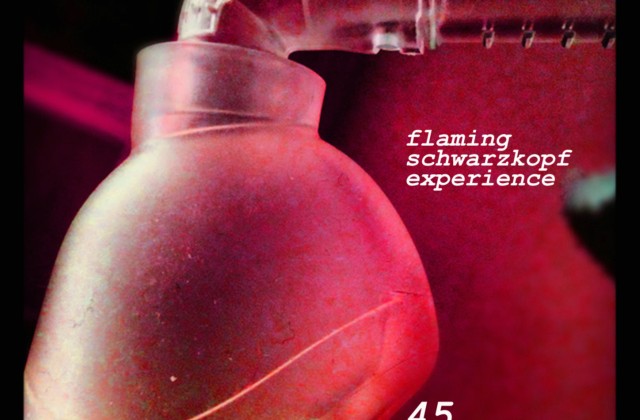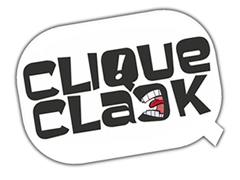Flaming Schwarzkopf Experience will extract your ambient gene

Strictly a studio project, Douglas Arthur’s ‘FSE’ has vision, depth and song textures that will seduce and entice you.
Michael: Who are some of your musical influences?
Douglas: Aside from the aforementioned Brian Eno, I quite like the soundscape/soundtrack works of Robert Fripp, Trent Reznor, Mark Mothersbaugh and Danny Elfman. Musically (“45″) may not sound much like most of them, but to me it is more about aspiring to some of their ideals and standards for approaching music.
Michael: And the band’s history?
Douglas: Flaming Schwarzkopf Experience traces its beginnings back to 1986. A group of my high school friends began recording “jams” and making tapes to give out. They were all musicians, having played in the high school band, but these were experimental, weird and fun, informed by Frank Zappa, Talking Heads, and probably alcohol. I was not directly involved in these tapes, but they intrigued me and I began to experiment with a tape recorder I had received for Christmas a few years before. I did crude multi-tracking by placing a bit of tape over the erase head and then rewinding to the beginning and adding the next track to it. I made 3 or 4 ninety minute tapes worth of stuff, just messing around with found sounds and vocal mishaps. I entitled my first tape “Save the Whales … But Pass The Gravy” so you have an idea of the sense of humor I was trying to convey with it.
In the spring semester of 1988 I took an audio production class and was able to record for the first time with a multi-track reel to reel, a drum machine and a keyboard. This was probably the first true incarnation of what was later to become FSE. I recorded every chance I got in the studio and produced almost 2 full 90 minute cassettes with compositions. As an aside, a song from this era, Roulette, appears on the Strong Scent Of Cedar ep that came out at the beginning of the year. After I graduated from college at the University of Buffalo in 1989, I no longer had access to the “big toys” and put my musical experiments on hold for a long while. However, music was hardly far from my mind.
During most of the 1990s I drew a comic strip for local Buffalo weekly newspaper Nightlife Magazine, called “Tales From The Dougside” (which is another story unto itself!) Dougside was a free-form arena for ideas for me with no recurring characters or story lines, so I had on occasion to do whatever I liked. I decided one week, to do a fake ad for a fake band. The reasoning behind this exactly has since been lost to the ever-shifting sands of time, but the band name I came up with was Flaming Schwarzkopf Experience. This was probably around 1994 or 95. This was after the first Gulf War and I just liked the way the name Schwarzkopf melded. I was aware, too, that there was an opera singer named Elisabeth Schwarzkopf who was a fairly famous Soprano, so the name stuck. I liked the idea so much I actually did a 2nd one a few months later. One of the fake albums was called “Mousey Tongue” and the other was “OJ-A-Go-Go.” I had a lot of fun creating artwork and song titles for this mythic band, and it always stuck in the back of my head.
Fast forward to 2000. I had decided to go back to school in Arizona for graphic design and one of my assignments was to create a CD cover. Flaming Schwarzkopf Experience immediately sprang back to mind and I was so into it that I did an entire CD package … even going so far as to write lyrics for all the songs to be included in the liner notes! The packaging turned out great and it made the band seem a lot more “real.”
A few years later I found myself back in Albany, NY and working for Apple Computer. Technology was beginning to catch up to my dreams, and I found myself playing with some new software called Soundtrack, which was used in conjunction with Final Cut Pro. Things were brewing on the internet as well. I was beginning to read about “on demand” publishing and some of the implications of that. The iTunes Music Store was still new and now offered a way for artists to sell their music in a digital format that was easy for fans to download. Around 2005 I started formulating the idea that I should try to not only record a new collection of experiments, but that part of that experiment would be to in turn make it available for sale on the internet. So I began, and I really had no idea what I was doing, but it was fun doing it. The first song I recorded was “Nightmare Of The Uninitiated Tumescence” which to me was a bit of a combination of Nine Inch Nails style industrial noise melding with the dynamic aesthetic of King Crimson’s “Dangerous Curves,” a song which starts out quietly and gets progressively louder until it climaxes. I continued to record on and off for the next 5 years until 2010. More options for music publishing presented themselves in that time and I was finally ready to take advantage of them.
While prepping the final tracks for what would be my first full length CD, “Encased In Glue,” I was taking a trip to Disneyworld in Florida and decided to make myself a soundtrack for the plane ride. So I created the song “Flying To Orlando” which runs at over 46 minutes long and is very much in the vein of Brian Eno’s ambient soundscapes … but with a pulse. I love soundscapes, but I think they work even better with a backbeat. Seeing an opportunity, I worked quickly and made this my first release using the CreateSpace on-demand service. CreateSpace is pretty nice in that the royalty structure is decent, the process is pretty painless, and they list your projects for free on Amazon! You can have on-demand physical CDs and MP3 digital downloads, so a very versatile service … and it is free!
Since the “Flying To Orlando” EP went so well, it gave me a sense of confidence to finally finish the 13 track “Encased In Glue” later that same year. I spent a good chunk of 2011 working on my next album “A Strong Scent Of Cedar” which I released earlier this year.
I have been working on some new tracks for the next full release tentatively titled “Train Wrecks And Hobo Love Songs” as well as the audio art project “Perfunctus” that is really four 60 minute pieces meant to be played simultaneously, though not necessarily in synch.
 CliqueClack
CliqueClack